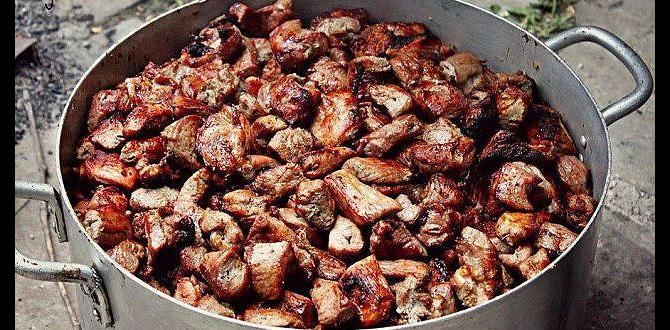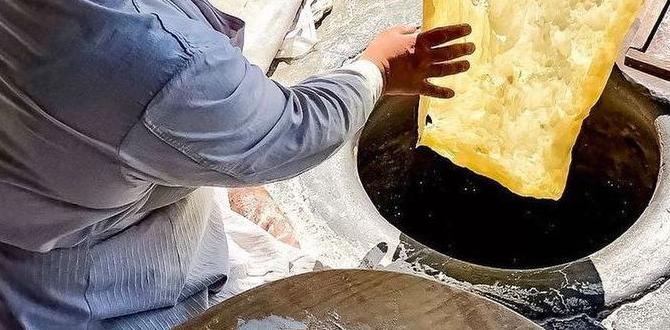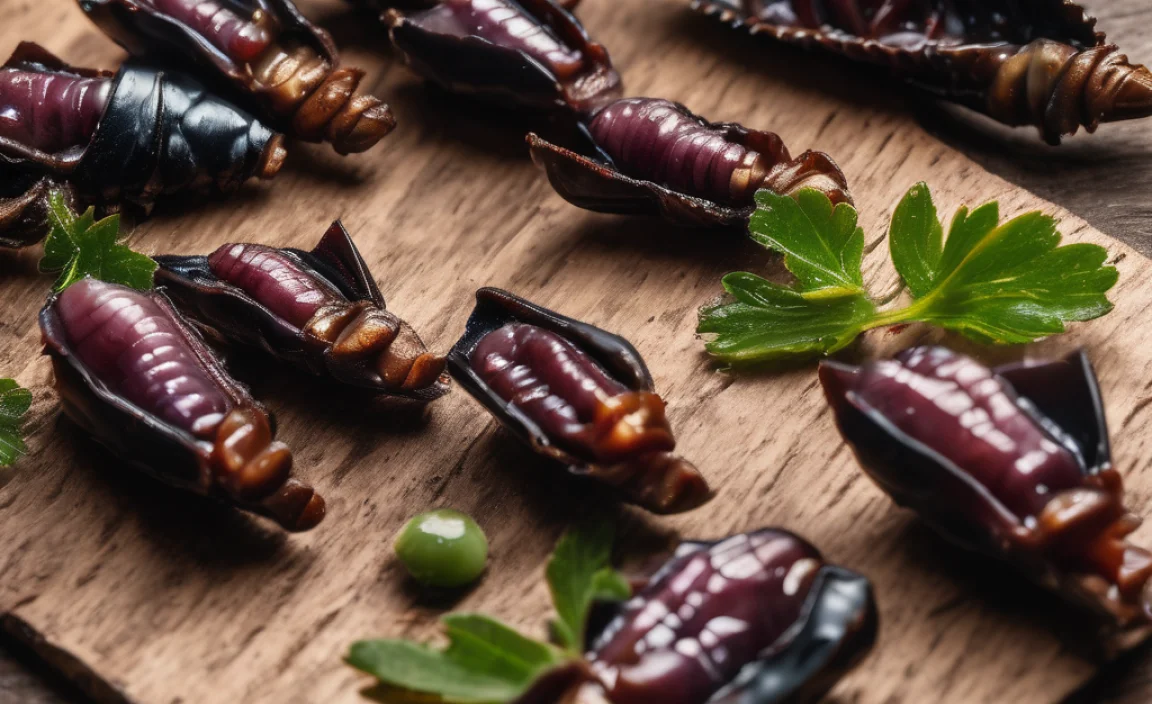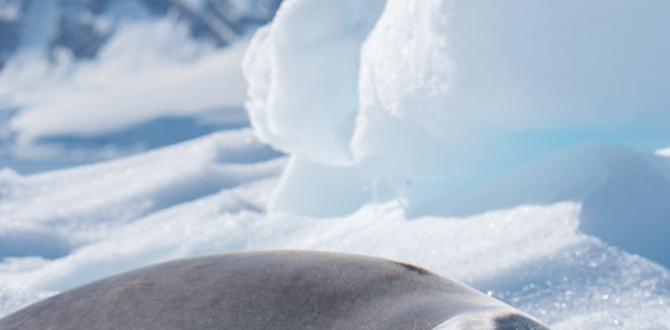Embark on an unforgettable Himalaya food trek! This essential guide simplifies planning, packing, and enjoying delicious local cuisine amidst breathtaking mountain scenery. Discover how to savor unique flavors and have an amazing adventure.
Dreaming of towering peaks and vibrant culture? A trip to the Himalayas is an incredible experience, and what better way to connect with its soul than through its food? Imagine savoring steaming momos or fragrant dal bhat after a day on the trail. It sounds amazing, right? But planning a food trek can feel a little daunting, especially if it’s your first time. Don’t worry, FoodsGuider is here to help!
We’ll break down how to prepare for your Himalayan culinary adventure, making sure you’re ready to explore both the stunning landscapes and the delicious flavors. Get ready to discover the secrets to a successful and tasty journey. We’ll cover everything from what to pack to what to eat, so you can focus on the magic of the mountains.
Why a Himalaya Food Trek is an Essential Adventure
The Himalayas, often called the “Roof of the World,” are not just about majestic mountains and spiritual retreats. They are also a melting pot of diverse cultures, each with its own unique culinary traditions. A food trek combines the thrill of hiking through some of the planet’s most spectacular scenery with the joy of discovering authentic, local flavors. This isn’t just eating; it’s an immersive cultural experience that connects you deeply to the places you visit and the people you meet.
Think about it: after a challenging yet rewarding hike, settling down to a meal prepared with fresh, local ingredients, perhaps seasoned with spices grown on the terraced slopes, is pure magic. It’s a way to understand a region’s history, its agricultural practices, and its people’s way of life through their food. This journey offers a richer, more meaningful travel experience than simply sightseeing.
Getting Started: Planning Your Himalaya Food Trek
Planning is key to any successful adventure, and a food trek in the Himalayas is no exception. The right preparation ensures you can focus on enjoying the journey without being bogged down by logistical worries. Here’s a straightforward approach to get you started:
1. Choose Your Destination Wisely
The vast Himalayan region offers many trekking routes, each with its distinct food culture and scenery. Consider your fitness level, the time of year, and what kind of culinary experiences you’re most interested in.
- Nepal (Everest Base Camp, Annapurna Circuit): Famous for dal bhat (lentil soup with rice), momos (dumplings), and yak cheese. Offers a wide variety of teahouse food experiences.
- India (Ladakh, Himachal Pradesh, Uttarakhand): Explore Tibetan-influenced cuisine in Ladakh, or spicy Himachal curries. Uttarakhand features simple, wholesome vegetarian dishes.
- Bhutan: Known for its spicy food, especially chilies, and dishes like Ema Datshi (chili and cheese stew).
2. Decide on the Trek Type
Will you opt for a guided trek, a teahouse trek, or a more independent camping trek? Each has different implications for food access and variety.
- Guided Treks: Meals are often pre-arranged and prepared by a cook. This can be convenient but might offer less flexibility in exploring local eateries.
- Teahouse Treks: You’ll eat at local lodges along the trail. This is where the real food adventure begins, allowing you to try regional specialties.
- Camping Treks: You’ll need to carry or have a dedicated cook team. This offers the most control but requires more logistical planning.
3. Best Time to Trek
The weather significantly impacts your trek and the availability of fresh produce. The most popular trekking seasons are generally spring (March-May) and autumn (September-November).
- Spring: Pleasant temperatures, blooming rhododendrons, clearer skies.
- Autumn: Crisp air, excellent visibility, harvest season for some produce.
- Monsoon (June-August): Higher chance of rain, leeches, and landslides, but lush green landscapes and fewer crowds.
- Winter (December-February): Cold, snow-covered trails, but clear skies and stunning views for experienced trekkers.
4. Fitness and Acclimatization
Trekking in the Himalayas involves high altitudes. Ensure you have a good level of physical fitness and plan for acclimatization days to prevent altitude sickness. Consult your doctor before you go.
Essential Packing for Your Himalaya Foodie Adventure
Packing for a Himalayan trek is crucial for comfort and safety. For a food trek, you’ll want to consider items that enhance your culinary experience and dietary needs. Think practical, lightweight, and versatile.
1. Gear Essentials
These are the basics for any trek:
- Sturdy Trekking Boots: Well-broken-in to prevent blisters.
- Layered Clothing: Base layers, fleece mid-layers, and a waterproof/windproof outer shell.
- Backpack: A comfortable daypack and a larger backpack for your main gear.
- Sleeping Bag: Rated for the expected temperatures.
- Trekking Poles: Help with balance and reduce strain on joints.
- Headlamp: Essential for early mornings or late evenings.
- Water Bottle & Water Purification: Staying hydrated is key.
- First-Aid Kit: Including any personal medications.
2. Food-Specific Items for Your Trek
These items will help you enjoy and manage your food experience:
- Reusable Utensils: A spork or set of lightweight cutlery.
- Snacks: High-energy bars, nuts, dried fruits, and perhaps some favorite treats for moments when trail food doesn’t hit the spot.
- Electrolyte Powders: To add to water, especially important at high altitudes.
- Insulated Mug: For enjoying hot drinks.
- Squeeze Bottles/Small Containers: For condiments or extra snacks.
- Hand Sanitizer: Crucial for hygiene before eating, especially when facilities are basic.
- Small Notebook & Pen: To jot down recipes or food encounters.
3. Dietary Considerations
If you have specific dietary needs (vegetarian, vegan, gluten-free, allergies), communicate them clearly to your guide or cook well in advance. It’s also wise to carry some safe, non-perishable snacks that meet your requirements.
Savoring the Flavors: What to Eat on Your Himalaya Food Trek
The culinary landscape of the Himalayas is as diverse and captivating as its natural geography. Each region offers a unique palate, shaped by local ingredients, climate, and cultural influences. Experiencing these local dishes is a highlight of any food trek.
Staple Dishes You Must Try
These dishes are the backbone of Himalayan cuisine and offer a true taste of local life:
- Dal Bhat (Nepal): The quintessential Nepali meal. A plate of steamed rice served with lentil soup (dal), vegetable curries, and often pickles. It’s nutritious, filling, and a staple for trekkers.
- Momos (Nepal, Tibet, Bhutan): Delicious steamed or fried dumplings, typically filled with vegetables, meat (yak, chicken, or buff), and spices. A must-try comfort food.
- Thukpa (Tibet, Nepal): A hearty noodle soup, often made with vegetables and meat. Perfect for warming up on a cold mountain evening.
- Tsampa (Tibet): Roasted barley flour, often mixed with yak butter tea to form a dough. A traditional staple providing sustained energy.
- Butter Tea (Po Cha) (Tibet, Bhutan): A unique, salty tea mixed with yak butter. An acquired taste for some, but incredibly warming and energy-boosting.
- Phagshapa (Bhutan): Pork cooked with chilies and sometimes radishes. Demonstrates Bhutan’s love for chilies as a main ingredient.
- Siddu (India – Himachal Pradesh): A steamed bread made from wheat flour, often stuffed with spiced vegetables or herbs. A local delicacy.
- Thali (India): A platter featuring a selection of various dishes, including curries, rice, bread, and yogurt. Offers a diverse taste of regional flavors.
Hydration and Beverages
Staying hydrated is critical, especially at altitude. Beyond water, try local beverages:
- Local Teas: Black tea, herbal teas, and milk tea are common.
- Tongba (Nepal): An alcoholic beverage made from fermented millet, served in a wooden container with a straw.
- Lassi (India): A yogurt-based drink, sweet or salty. A refreshing treat.
When You’re Not Eating at Teahouses: Camp Food Ideas
If you’re on a camping trek, planning your meals is essential. Focus on lightweight, non-perishable, and high-energy options:
- Dehydrated Meals: Many varieties are available, just add hot water.
- Instant Noodles & Soups: Quick to prepare and provide warmth.
- Oatmeal: A great breakfast option.
- Rice & Lentils: Basic staples that can be cooked with spices.
- Trail Mix: Nuts, seeds, and dried fruits offer sustained energy.
It’s also a great idea to carry a small stove and fuel, a pot, and utensils if you’re not relying on a dedicated cook.
Navigating Local Eateries: Tips for a Food Trek
Dine where the locals dine! This is where the most authentic and delicious experiences are found. Be open to trying new things and embrace the adventure.
1. Embracing Teahouse Cuisine
Teahouses along popular trekking routes offer a range of dishes. While dal bhat is ubiquitous and usually a safe bet, don’t be afraid to explore the menu.
- Ask for Recommendations: The teahouse owner or staff can often suggest their specialties.
- Check for Freshness: If possible, observe how food is prepared.
- Be Patient: Meals might take time, especially in more remote areas. Savor the anticipation!
2. Hygiene and Food Safety
This is paramount to avoid getting sick. Remember the mantra: “Boil it, cook it, peel it, or forget it.”
- Drink Bottled or Purified Water: Always ensure your water is safe. Consider a reliable water purification method, such as filters or purification tablets.
- Eat Cooked Food: Opt for food that has been thoroughly cooked and is served hot.
- Be Wary of Raw Foods: Salads, uncooked fruits (unless you peel them yourself), and ice in drinks can be risky.
- Wash Your Hands: Use hand sanitizer or soap and water before every meal.
3. Cultural Etiquette Around Food
Showing respect for local customs will enrich your experience.
- Accept Offerings: If offered food or drink, it’s polite to accept, even a small amount.
- Use Your Right Hand: In many cultures, the right hand is used for eating and passing food.
- Don’t Waste Food: Take only what you can eat.
- Ask Before Photographing: If you want to photograph food or people preparing it, ask for permission first.
Beyond the Plate: Cultural Immersion Through Food
A food trek is much more than just sustenance; it’s a powerful lens through which to view and understand local culture. The way food is grown, prepared, and shared tells stories about a community’s history, traditions, and values.
Consider the agricultural landscape – terraced farms carved into mountainsides represent generations of hard work and ingenuity. The spices used, some endemic to the region, speak of ancient trade routes and local biodiversity. Participating in a cooking demonstration, sharing a meal with a local family, or even just observing daily meal preparations offers profound insights.
Food fosters connection. Sharing a meal, even with language barriers, breaks down walls and creates genuine human connections. This is the heart of immersive travel. You’ll leave with not just memories of stunning vistas, but also the warmth of shared meals and the taste of authentic Himalayan life.
Pros and Cons of a Himalaya Food Trek
Like any adventure, a food trek has its advantages and potential challenges. Understanding these can help you prepare and manage your expectations.
| Pros | Cons |
|---|---|
| Rich Cultural Immersion: Directly experience local traditions and lifestyles through food. | Potential for Upset Stomach: Risk of foodborne illnesses if hygiene standards aren’t met. Consult the U.S. Centers for Disease Control and Prevention (CDC) for traveler’s health advice. |
| Unique Culinary Experiences: Taste authentic dishes not found elsewhere. | Limited Food Choices at Altitude: Menu options can become simpler and less varied in very remote or high-altitude areas. |
| Support Local Economies: Eating at local establishments directly benefits communities. | Dietary Restrictions Can Be Challenging: Accommodating specific allergies or complex diets might be difficult in some areas. |
| Fuel for Adventure: Delicious, hearty meals provide energy for challenging treks. | Hygiene Management is Crucial: Requires constant vigilance with hand washing and food/water choices. |
| Memorable Connections: Shared meals create lasting bonds with locals and fellow travelers. | “Acquired Tastes”: Some traditional foods like butter tea might not appeal to everyone initially. |
Frequently Asked Questions About Himalaya Food Treks
Q1: What is the single most important item to pack for a Himalaya food trek?
A1: While many things are essential, for a food trek specifically, a reusable water bottle and a reliable water purification method (filter, tablets, or boiling capability) are paramount. Staying hydrated with safe water is vital for health and performance trekking at altitude.
Q2: How can I handle dietary restrictions like vegetarianism or allergies on a trek?
A2: Communicate your needs clearly and well in advance with your trekking agency or guide. Research the typical cuisine of your chosen region. It’s also wise to carry a few non-perishable, safe snacks that meet your dietary requirements as a backup.
Q3: What if I get an upset stomach?
A3: Prevention is key! Stick to well-cooked food, boiled or purified water, and good hygiene. If you do experience stomach issues, mild remedies like rehydration salts, bland food (plain rice, boiled potatoes), and rest can help. Carrying a basic digestives aid or over-the-counter medication is also a good idea.
Q4: Is it safe to eat street food or food from small, local stalls?
A4: To be safe, it’s generally recommended to stick to established teahouses or restaurants with good turnover and visible hygiene practices, especially on your first food trek. If you choose to try street food, look for items that are cooked fresh in front of you and served piping hot. Always be cautious.
Q5: Can I expect to find Western food options on a trek?
A5: On popular routes like the Everest Base Camp or Annapurna Circuit in Nepal, you will likely find some Western-style dishes on teahouse menus (e.g., pancakes, pasta, pizza). However, for a true food trek experience, it’s best to embrace the local cuisine. As you go to more remote areas, expect your options to be more traditional.
Conclusion: Your Delicious Himalayan Journey Awaits
A Himalaya food trek is more than just a hike; it’s an immersive journey for your senses. You’ll witness breathtaking landscapes, connect with resilient cultures, and, most importantly, savor incredible flavors. By planning ahead, packing smart, and approaching your culinary explorations with an open mind and a healthy dose of caution regarding hygiene, you’re setting yourself up for an unforgettable adventure.
From the hearty dal bhat that fuels Nepali porters to the fiery chilies of Bhutan, each bite tells a story. Embrace the simple joy of sharing a meal after a long day’s trek, and let the unique tastes of the Himalayas become as memorable as the towering peaks themselves. So, lace up your boots, pack your appetite, and get ready for an adventure that nourishes both body and soul!





